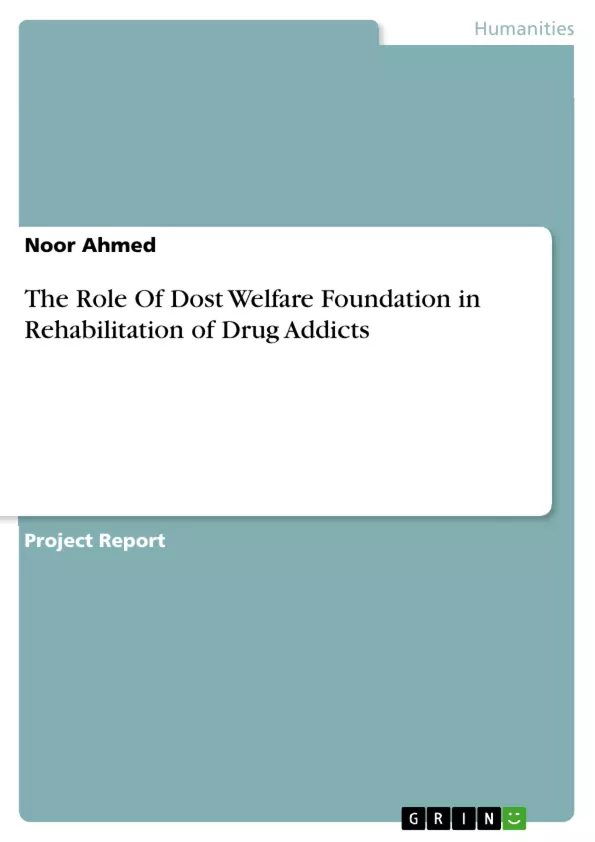Man’s desire to employ substances that provide pleasurable stimulation or narcotic effects upon the central nervous system has been expressed universally in ancient as well as in modern civilization. With the passage of time excessive indulgence in them came to be considering as deprived or criminal behavior.
In recent years, however, it has been recognized that drug addiction is a psychiatric and social problem. The very word “drug” means different things for different people. For some people, drugs are those substances which are illegal and socially disapproved of, associated with stereotypes images of “junkies” or solvent snuffers, and not everyday substances that ordinary people use. On other hand many people increasingly refer to all medicinal preparations as drugs.
A drug, broadly speaking, is any substance that, when absorbed into the body of a living organism, alters normal bodily function (World Health Organization, 1969). In pharmacology, a drug is "a chemical substance used in the treatment, cure, prevention, or diagnosis of disease or used to otherwise enhance physical or mental well-being (Middle English Drogges, 2007). Addiction is a chronic, often relapsing, brain disease that causes compulsive drug seeking and use, despite harmful consequences to the addicted individual and to those around them. Although the initial decision to take drugs is voluntary for most people, the brain changes that occur over time challenge a person’s self-control and ability to resist intense impulses urging them to take drugs (National Institute on Drug Abuse, 2011).
Inhaltsverzeichnis (Table of Contents)
- INTRODUCTION
- Introduction
- Common Types of Drugs
- Origin of Drugs
- Objectives of the Study
- Methodology
- Organization of the study
- DRUG ADDICTION EXCLUSION
- Drug Addiction and Rehabilitation a Review of Literature
- The Past
- Drug use around the world
- Drug addiction in Pakistan
- Rehabilitation of Drug Addicts
- ORGANIZATIONAL PROFILE OF DOST WELFARE FOUNDATION
- Introduction
- Partners Of Dost Welfare Foundation
- The Staff Of Dost Welfare Foundation
- Drug Addiction Treatment and Rehabilitation Programs
- Drop-In Centre and Outreach Services for Street Drug Addicts
- Faith-Based Drug Demand Reduction Services in Fata Regions of Pakistan
- Drug Demand Reduction Services and Strengthening Local Community Organizations in Afghanistan
- Community-Based Drug Demand Reduction Centre, Khazana
- HIV Awareness and Voluntary Counseling Testing Services for Drugs Addicts
- Fieldwork and Internship Program For University Students and Graduates
- Training program for National and International Government Organizations and NGOs
- Treatment Centre for Adults Shahi Bala
- Day Care Centre for Children Haji Camp
- DATA ANALYSIS AND INTERPRETATION
- Case histories
- CONCLUSIONS
- Conclusions
Zielsetzung und Themenschwerpunkte (Objectives and Key Themes)
This field work report aims to explore the role of Dost Welfare Foundation in the rehabilitation of drug addicts. It investigates the organization's structure, programs, and impact on the lives of individuals struggling with addiction.- Drug addiction and its social, psychological, and economic impact.
- The history and prevalence of drug use in Pakistan.
- The various approaches and programs implemented by Dost Welfare Foundation for drug rehabilitation.
- The challenges and successes of the organization's efforts in tackling drug addiction.
- The importance of community engagement and collaboration in addressing this issue.
Zusammenfassung der Kapitel (Chapter Summaries)
The report begins with an introduction to the topic of drug addiction, providing a general overview and defining key terms. The first chapter examines the history of drug use around the world and its evolution into a significant social problem. The second chapter delves into the organizational profile of Dost Welfare Foundation, highlighting its structure, staff, and diverse programs for drug addiction treatment and rehabilitation. The report then analyzes the organization's data and case studies to illustrate the impact of its interventions on the lives of individuals struggling with addiction. Finally, the report concludes by outlining the key findings and recommendations for further action.Schlüsselwörter (Keywords)
The key themes of this report revolve around drug addiction, rehabilitation, community-based interventions, social work, Dost Welfare Foundation, Pakistan, and the social and economic impact of drug use. These themes are explored through the lens of empirical data and case studies, providing a comprehensive understanding of the organization's role in addressing this critical social issue.- Quote paper
- Noor Ahmed (Author), 2012, The Role Of Dost Welfare Foundation in Rehabilitation of Drug Addicts, Munich, GRIN Verlag, https://www.grin.com/document/206992



